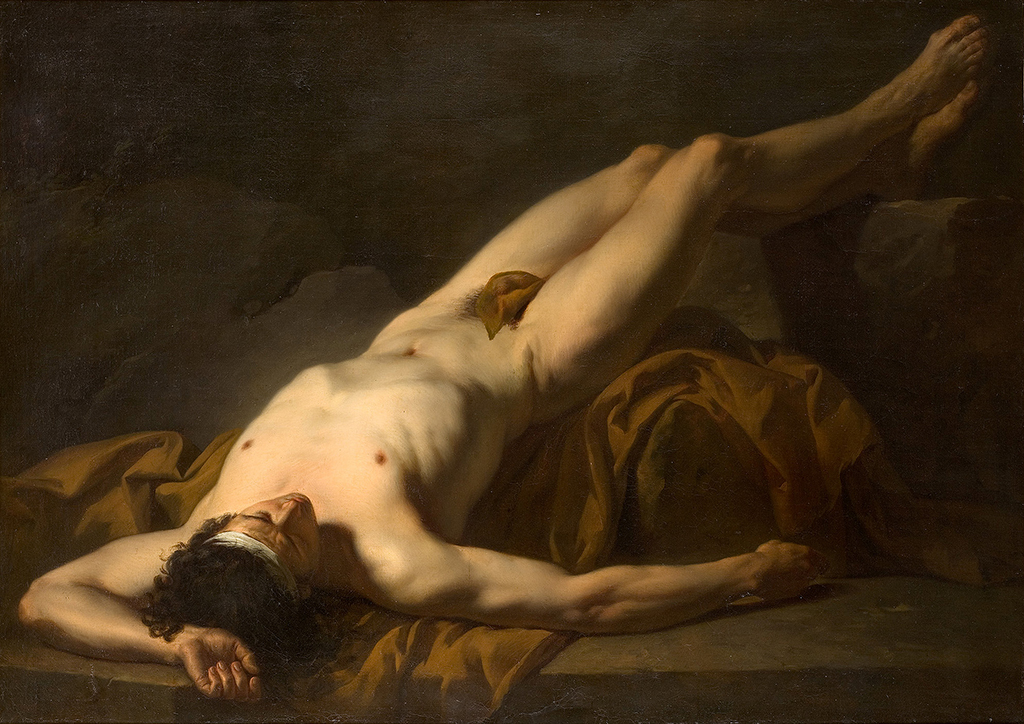Hector is a lesser known artwork from the career of Jacques Louis David. It was completed in 1778 and is now owned by the Fabre Museum in Montpellier, France.
One immediately is taken by the emotion of this piece, as a lifeless body lies directly in front of us. This slim young man is collapsed on the floor, with just a small cloth to hide his modesty. This brown material intertwines around the scene whilst every other part of the composition is left blackened. The light directly surrounds his gentleman, providing an extreme contrast that may remind some of the work of Caravaggio from centuries earlier, with the likes of Judith Beheading Holofernes and Crucifixion of St Peter. David took on a number of different genres within his career, with early portraits that set about displaying his promise, before moving on to lavish, complex history paintings which would take months of work. He also made use of Greek literature for inspiration on many occasions too. The subject of the piece found here returned in another David painting, namely Andromache Mourning Hector.
Hector is actually a Trojan prince from both Greek and Roman mythology. He was considered a noble and high skilled warrior, but was eventually killed by Achilles. Many artists have chosen to depict this character within their work but normally have done so in a way that captures Hector as strong and masculine. The portrait here leaves him as slim and entirely vulnerable, delivering a fall from grace which was another theme which was used by the artist several times. For example, he also portrayed Belisarius as an old man whose time as a successful general had long since been forgotten, and he had now been reduced to a elderly blind beggar.
The Louvre in Paris continues to hold perhaps the finest collection of French art in the world, and can help one to see the different movements which appeared between the 17th and 19th centuries. That was the time when this nation ultimately led the world, thanks to artists such as Jacques Louis David. Whilst he turned his back on the Rococo style of his master, Boucher, some of his students would later move into the French Romanticist movement instead of his own Neo-classical approach. This was merely part of the cycle of art which occurs from one generation to the next. The Romancists were spearheaded by Delacroix and Gericault, whose own key works included Portrait of a Kleptomaniac and The Charging Chasseur from Gericault, plus Christ on the Sea of Galilee and Massacre at Chios by Delacroix. Eugene actually was known to David via his elder sister, who had her portrait painted by the artist when Delacroix was only one year old.





